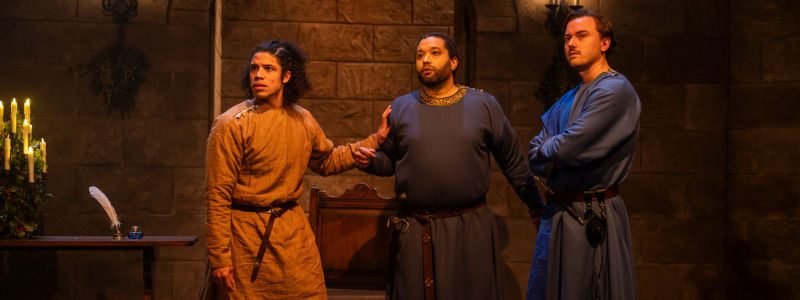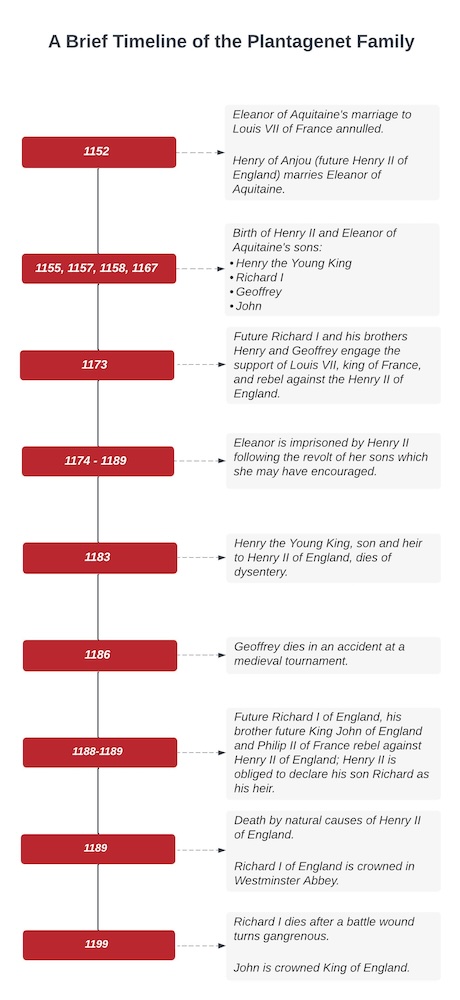History Alive Activity

Take a look at the actual historical timeline surrounding the events in The Lion in Winter; then, choose another point in the history of the real-life figures to craft a monologue, scene, or story! This activity, which combines the history of the Plantagenet and creative writing, is suitable for learners of all ages.
History Alive Activity
- Activity Preparation
- Supplies:
- Plantagenet family timeline (see below)
- Writing materials (paper or digital)
- Supplies:
This activity will take anywhere between 20 — 60 minutes.
- Learning Sequence
- Examine the timeline of the Plantagenet family (see below). Notice the timing and type of events that lead up to the events of The Lion in Winter, and also what happens after the conclusion of the play. Note that this timeline does not by any means include every important event in any single figure’s life.
- Consider the following questions:
- What surprises you about the outcome for this family?
- Do the real historical events following the play change how you view or feel about the play?
- Why do you think playwright James Goldman chose to center the action in 1183 as opposed to another moment in this timeline?
- Select a moment on the timeline that intrigues you and that you’d like to further explore through some creative writing. After you select the event, consider which characters will be involved — both according to historical record and according to your own creative whims. Then, decide what kind of product you will create: a scene, a monologue, a short story, or something else of your choice.
- As you write, think about what kind of style, characterization, and tone you would like to establish. You may choose to borrow elements from James Goldman’s writing, from Court Theatre’s production, or you may choose to go in your own direction.

- This activity aligns with the following standards:
- Illinois Arts Learning Standards
- Anchor Standard 1: Generate and conceptualize artistic ideas and work.
- Anchor Standard 2: Organize and develop artistic ideas and work.
- Anchor Standard 11: Relate artistic ideas and works with societal, cultural, and historical context to deepen understanding.
- Common Core State Standards
- CCSS.ELA.W.3 Write narratives to develop real or imagined experiences or events using effective technique, well-chosen details, and well-structured event sequences.
- CCSS.ELA.W.10 Write routinely over extended time frames (time for research, reflection, and revision) and shorter time frames (a single sitting or a day or two) for a range of tasks, purposes, and audiences.
- Illinois Arts Learning Standards